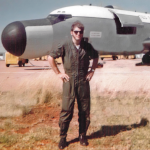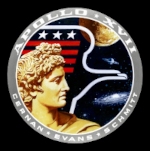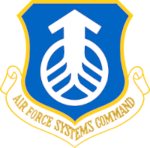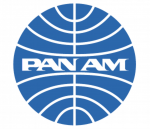Introduction
The Apollo Range Instrumentation Aircraft (ARIA) shown in Figure 2, were a fleet of eight specially modified USAF K/C-135 aircraft. After modification the aircraft were redesignated as EC-135N. The ARIA were an airborne telemetry and voice relay station designed and developed to supplement land and marine stations in support of Apollo and other DOD and NASA space and missile programs. The principal modifications included: very large nose mounted radome that housed the 7 ft steerable and autotracking multi-frequency antenna, additional HF antenna mounted on the wing tips, trailing wire HF antenna, additional (fourth) electrical power generator system, new closed loop air conditioning system for cooling the Prime Mission Electronic Equipment, new sound proofing in the fuselage to decrease the noise level in the PMEE crew compartment, and 24 racks of electronic equipment for telemetry receiving, recording, and astronaut voice relay via HF.
Figure 2: ARIA 61-0327 (Boeing C/N 18234) in flight off Patrick Air Force Base (note: “A”model engines, USA flag carrying diplomatic paint scheme, HF wing tip probes, ALOTS radome)
By the time of Apollo 17 a standardized seven phase protocol had been developed and successfully employed for all missions:
1. The plan
2. Pre-mission: Sterilization, calibrations, and simulations
3. Deployment for TLI
4. TLI, orbital support, and recovery
5. Deployment for Reentry support
6. Reentry support
7. Return to Patrick AFB




